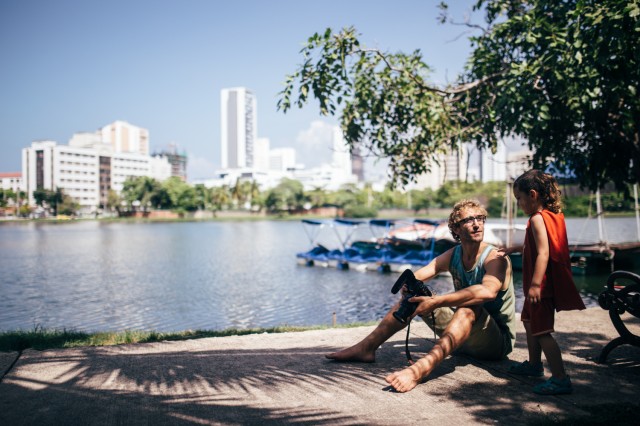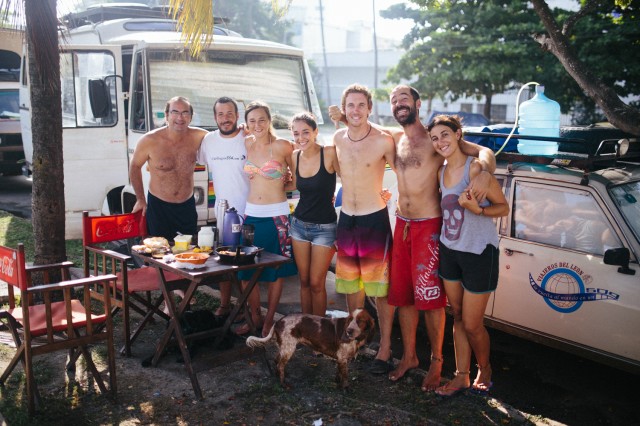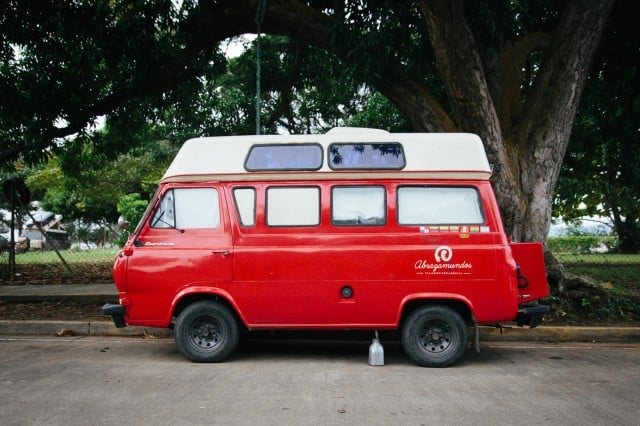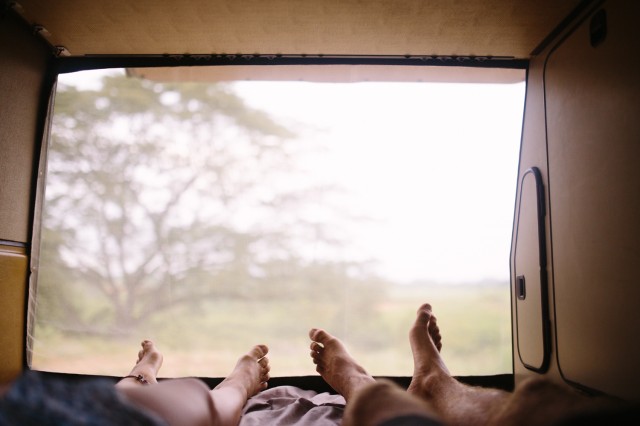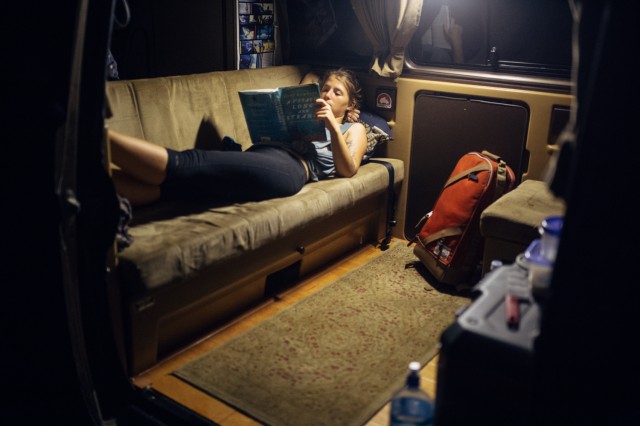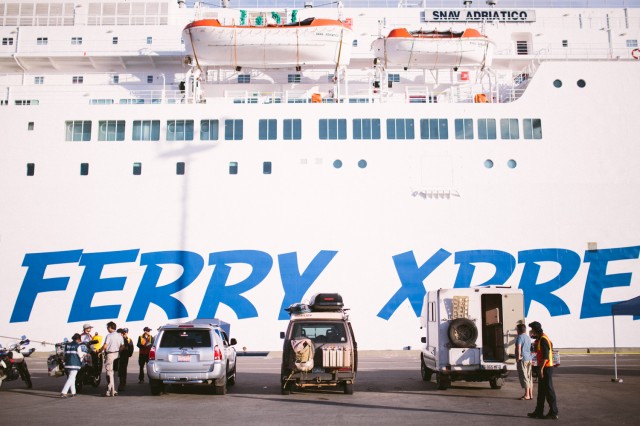We met the elderly German couple first when we arrived at the well known street campsite in Panama City, patrolled regularly by cops who ignored the sleeping overlanders camped next to a yacht club, of all places. They were too busy harassing locals in parked cars who used the space for “intimacy.” It was like a classic makeout spot, but instead of being atop a hill looking out over the city, it was found next to the Panama Canal. A spot for secret meetups wasn’t exactly our need; just a place to park our ’85 Westfalia while we prepared ourselves for a place we’d been building up in our minds for the past 5 months: South America. Our group of four 20-somethings had driven from Montana through every country in Central America, creating a photo and video project documenting van life and Latin American culture. We connected with others by giving away copies of the portraits we made to each local and traveler we photographed. But in the 12,000 miles covered, we’d met very few other people driving the Americas.
That was until the overlander bottleneck of Panama City, where we found a handful of them waiting, like us, to cross over to South America. The Germans, living out of their large pickup and camper, were classy as all get out, arranging picnics in the middle of the day, which featured chilled white wine. I didn’t resent them for this despite our all-pasta-all-the-time diet, in fact it was pretty amusing to hear loud laughter and see that the source was a group of people my grandparents’ age sitting around a folding table, one of them gesturing enthusiastically with their wine glass. I didn’t resent them when they had bad news for us: the brand new ferry service, the one we were counting on to take us from Panama to Cartagena, Colombia, had stopped accepting cars.
Almost everyone we talked to about traveling between Central and South America thought of the ferry as mythical because of alternatingly promising and feeble attempts to get a service started. In fact, we too were doubtful back in Mexico, when we were first told about the upcoming and most believable try at a ferry. Our only official plan then was Not Driving Through the Darien Gap. The Gap is a 60-mile break in the Pan-American Highway that probably doesn’t need an introduction: it’s a justifiably dangerous area that seems synonymous with the paramilitary group, FARC, and is impassable by most cars. We were looking for a little risk on this trip, but we knew better than to mess with actual peril. So by the time we left Honduras, when the ferry had been legitimized by the presence of a somewhat professional-looking website and a Facebook page, we let ourselves get excited.
There was only one thing I resented the German couples for. It was how affable they remained, having adopted an easy c’est la vie attitude after two years of world travel, unhurried and unfazed by the news that they might not be able to get their car to South America. This nosedive of momentum didn’t suit our group quite as well. The ferry was wildly cheaper than other options that were a mix-and-match combination between flying, sailing, freight, and getting things stolen out of your vehicle below deck. So it was more than a letdown. It threatened our cool, and I think by extension, our ability to respond as maturely. Maybe all we needed was some of that chilled wine.
The Germans’ undismayed point of view seemed to be shared by the Argentinean couple that drove an endearingly cherry red ’65 Econoline. (Note: a van painted cherry red is the closest it might ever get to being described as “jaunty.”) Those two had driven from the southern end of Argentina and were on their way to a vague concept of North. How far they’d go wasn’t there in the front of their thoughts; instead it was their project of engaging with the world through genuine connections. They called it Abrazamundos (which translates to “embracing the world”). It reminded me of our project, except their thing was hugs instead of photographs. And the more I thought about it, the more theirs appeared to be an enlightened way to think of things instead of a project in need of branding. They certainly seemed enlightened as they sat in folding chairs under a gigantic, sweeping tree whose roots interrupted the sidewalk, weaving bracelets. Selling the jewelry was their main source of income, and they’d made it all the way to Panama. The progress of our trip didn’t hinge on something as unknown as how many bracelets we were going to sell that night on the sidewalk, but in that moment I wondered if that was a good or bad thing.
Both the Germans and the Argentineans transmitted something to me the few days that we all inhabited the lover’s yacht club campsite. It might not be enough, to me, to be a traveler. I’d like to be a good traveler. I’m not sure exactly what that is yet, but I have an inkling that it means having a place in mind that you’d like to be, but you don’t let that destination bind you. I’m learning that my whole outlook responds more deeply and happily to this idea. But, even as I’m writing this now there’s a roadblock in my mind: I still think if I prepare enough, I can circumvent what’s ahead of us, maybe outsmart it, and be triumphant. But good travelers don’t have to stay true to rigid plans. Being “triumphant” means having a picnic in response to bad news, and sleeping soundly all the same. Good travelers are connected—to the present, and to each other. They are abrazamundos-ing, a word I made up courtesy of the Argentineans.
The ferry started again after a week of waiting. The tension that had grown in us backed off a little, but still had some kind of life somewhere. It would probably rear its head again further down the road, and for that, we now keep only the classiest of boxed wines in our fridge.
Read more from the Vanajeros [HERE].





